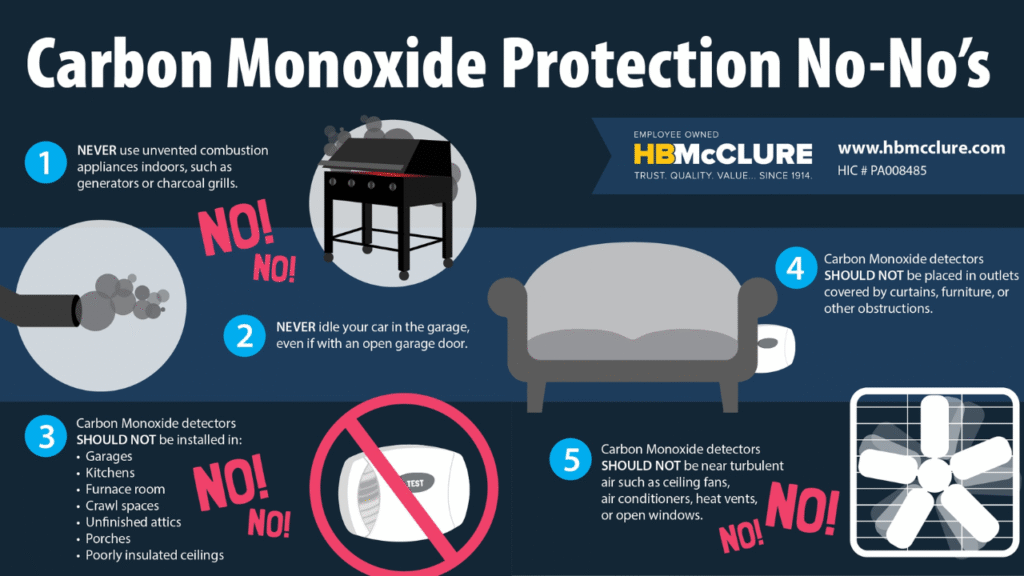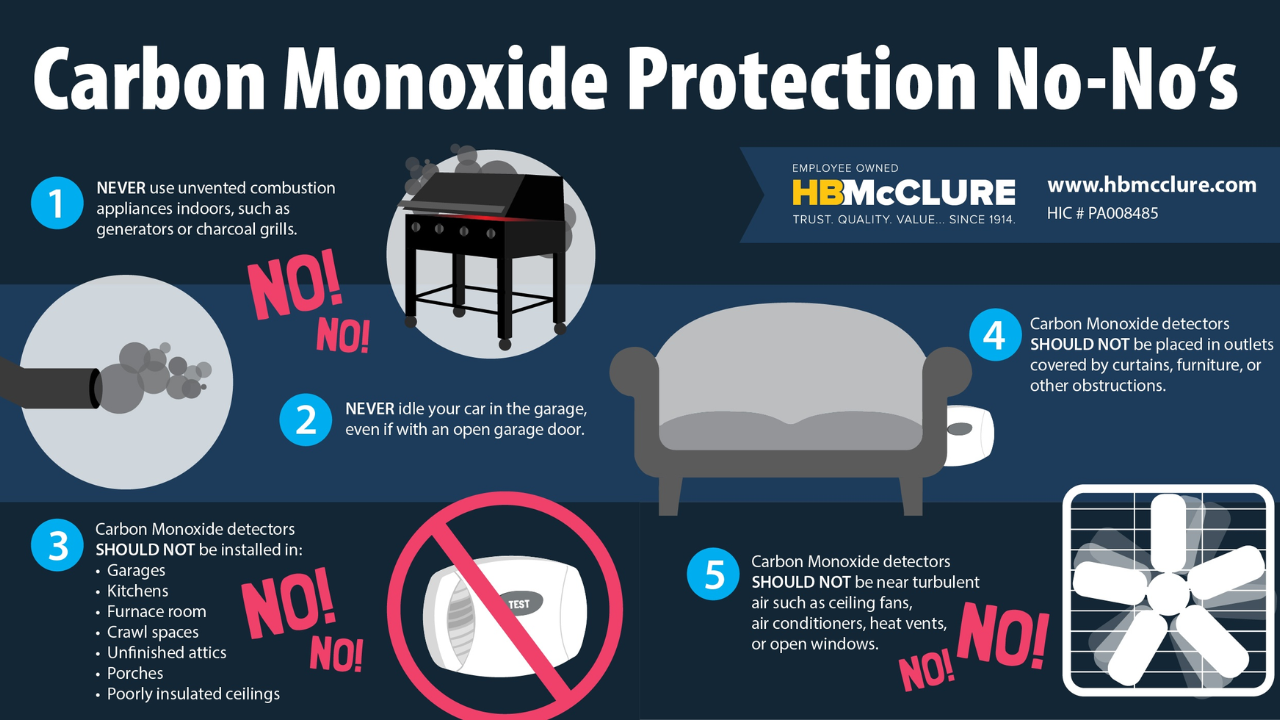
Carbon monoxide (CO) is often called the “silent killer” because it is colorless, odorless, and tasteless, making it impossible to detect without specialized equipment. Produced when fuels such as gas, wood, coal, or oil burn incompletely, CO can build up in enclosed spaces and pose life-threatening risks. Understanding how CO exposure happens, its effects, and how to prevent it is essential for every homeowner.
Why Carbon Monoxide Is Dangerous
CO is dangerous because it interferes with the body’s ability to transport oxygen. When inhaled, it binds to hemoglobin in the blood more effectively than oxygen does, reducing the oxygen supply to vital organs. Prolonged or high-level exposure can lead to unconsciousness, brain damage, or death.
Common Sources of Carbon Monoxide
Many household appliances and situations can generate CO if not properly maintained or ventilated:
- Gas-powered appliances – Stoves, ovens, water heaters, and furnaces.
- Fireplaces and wood stoves – Especially if chimneys are blocked or damaged.
- Vehicles – Idling in enclosed garages.
- Portable generators – Used indoors or too close to windows.
- Charcoal grills – Used inside homes or garages.
Signs and Symptoms of CO Poisoning
Symptoms can be subtle and often mistaken for flu or food poisoning:
- Headache
- Dizziness or confusion
- Nausea and vomiting
- Shortness of breath
- Weakness or fatigue
- Loss of consciousness (in severe cases)
Important: If symptoms improve when you leave the area, CO may be the cause.
How to Detect Carbon Monoxide
Because CO is undetectable by human senses, technology plays a crucial role:
- Install CO detectors – Place them in sleeping areas and main living spaces.
- Test detectors monthly – Ensure batteries and alarms function properly.
- Use professional inspections – Check fuel-burning appliances annually.
Prevention Measures for Carbon Monoxide
1. Maintain Appliances Regularly
Have all fuel-burning devices inspected by licensed technicians to ensure proper operation and ventilation.
2. Ensure Adequate Ventilation
Never block air vents, flues, or chimneys, and ensure exhaust systems are clear of debris.
3. Use Appliances Correctly
Only use appliances for their intended purposes—never heat your home with an oven or run a generator indoors.
4. Avoid Idling Vehicles in Garages
Even with doors open, CO can build up quickly in semi-enclosed spaces.
5. Educate Household Members
Everyone should know CO risks, symptoms, and emergency steps.
Immediate Steps if CO Exposure Is Suspected
- Turn off all fuel-burning appliances.
- Move everyone outdoors to fresh air immediately.
- Call emergency services.
- Seek medical attention, even if symptoms fade.
- Do not re-enter until professionals confirm it’s safe.
Overview Table
| Risk Factor | Why It’s Dangerous | Prevention Method |
|---|---|---|
| Faulty gas appliances | Incomplete combustion produces CO | Annual servicing by professionals |
| Blocked chimneys or vents | Prevents CO from escaping | Regular cleaning and inspection |
| Indoor use of generators | CO buildup in enclosed space | Operate outdoors, away from windows |
| Idling vehicles in garage | Rapid CO accumulation | Turn off engine immediately when parked |
| Misuse of appliances | Improper burning of fuel | Follow manufacturer instructions |
Table: CO Exposure Symptoms and Severity
| Level of Exposure | Symptoms | Recommended Action |
|---|---|---|
| Mild | Headache, slight dizziness | Move to fresh air, check detectors |
| Moderate | Nausea, confusion, chest pain | Seek immediate medical attention |
| Severe | Unconsciousness, seizures, death | Call emergency services immediately |
Common Mistakes That Increase CO Risks
- Not having CO detectors installed – Leaves households vulnerable.
- Ignoring regular maintenance – Small faults can cause major hazards.
- Using outdoor equipment indoors – Creates immediate CO buildup.
- Disabling alarms – Removes the only early warning system.
Conclusion
Carbon monoxide risks are preventable with awareness, proper maintenance, and the use of CO detectors. Since the gas cannot be detected by smell or sight, proactive prevention is the only reliable defense. Every home with fuel-burning appliances should have detectors installed, equipment serviced regularly, and household members educated about symptoms and emergency actions.
Taking these precautions can mean the difference between life and death when dealing with CO exposure.
3 One-line FAQs
Q1: Where should I install carbon monoxide detectors?
A1: Install them in sleeping areas, living rooms, and near fuel-burning appliances.
Q2: How often should I replace a CO detector?
A2: Most detectors last 5–7 years; check the manufacturer’s instructions.
Q3: Can I smell carbon monoxide?
A3: No, CO is odorless and undetectable without a proper alarm.

